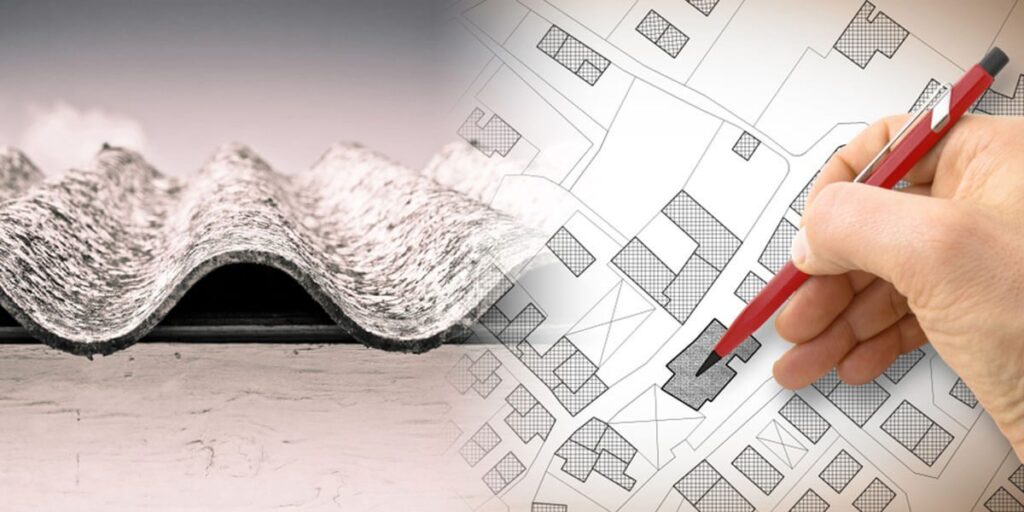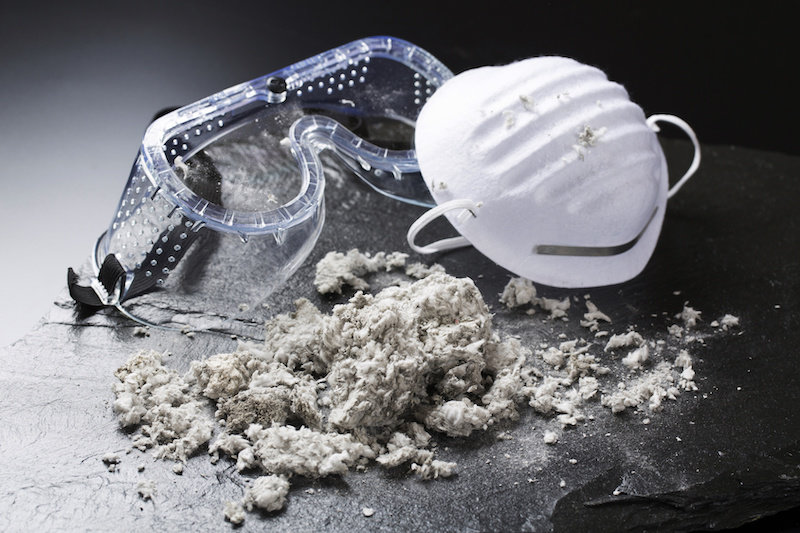Most U.S. homes built prior to 1980 used a toxic insulation material that can have dreadful health repercussions decades later. Asbestos is so toxic that the EPA concluded that there’s no safe level of exposure to it. The risk is significantly greater if homeowners try to renovate or demolish old homes with asbestos-containing materials on their own.
What Is Asbestos?
Asbestos is a naturally occurring silicate mineral that has several amazing properties which made it a miracle construction material from World War 1 until 1980, when it had already been banned across most of the Western World.
Asbestos is waterproof, fireproof, unusually tough, and acts as a great insulator against heat and noise. It used to be routinely added to construction material blends for enhanced structural strength.
Its peak popularity happened in the 60’ and ’70, when asbestos could be found in almost anything from buildings’ walls and floors to fire-proof blankets and Christmas tree decorations. After 1980, though, it was discontinued amid overwhelming evidence that it may cause serious respiratory conditions and a very deadly form of cancer known as mesothelioma.

Not surprisingly, the two countries with the most widespread asbestos use the U.K. and Australia also have the highest number of mesothelioma cases. The United Kingdom outlawed asbestos in 1999.
Why Is it So Dangerous?
Airborne asbestos particles are the only known cause of mesothelioma, a fatal form of cancer affecting the membrane lining of some organs, including the abdomen and lungs, when ingested or inhaled. Asbestos exposure also boosts the risk of asbestosis, pleurisy, and lung cancer.
While the mineral may cause cancer, it is only dangerous if it is turned into tiny airborne particles, an inevitable occurrence when renovating, repairing, or demolishing an old home. The most exposed people are those handling asbestos for a living, such as miners, construction workers, factory workers, shipyard workers, and the military.
According to the EWG Action Fund, asbestos kills up to 15,000 people in the U.S.A. alone every year. Of those, between 8,000 and 10,000 had been diagnosed with lung cancer and 3,000 with mesothelioma.
Does My Home Contain Asbestos?
If your home was built pre-1980 in the U.S. or pre-2000 in the U.K., it probably does contain asbestos. It is impossible to tell whether a home contains asbestos products by just visual inspection. You’ll need a professional to perform a microscopic examination for a clear answer. For a start, you’ll need an asbestos sampling kit if you want to test your home for asbestos. You can also use an asbestos sample testing service and send the sample over to the lab to get it examined.

Asbestos was embedded in thousands of products, including consumer goods. The most common places you might find asbestos include:
- Insulation including pipe insulation (if the home was built or renovated between 1930 and 1950)
- Roofing and siding shingles
- Caulking
- Textured wall coatings and paintings (in homes renovated up to 1977)
- Old water heater blankets
- Heaters, fireplaces, and stoves insulated with asbestos-containing materials
- Door gaskets in old furnaces
- Sheet vinyl flooring
- Vinyl floor tiles
- Anything containing asbestos cement
What Can I Do About It?
If you believe that your home may come with asbestos-containing materials, contact a certified asbestos surveyor for a definite answer. If the answer is positive, hire professionals to renovate or demolish an asbestos contaminated home.
Also, if you or a loved one living in that home have been diagnosed with mesothelioma, contact a lawyer immediately. Mesothelioma lawyers fight for victims of asbestos exposure and they often win since asbestos is the only known cause of this aggressive form of cancer.






